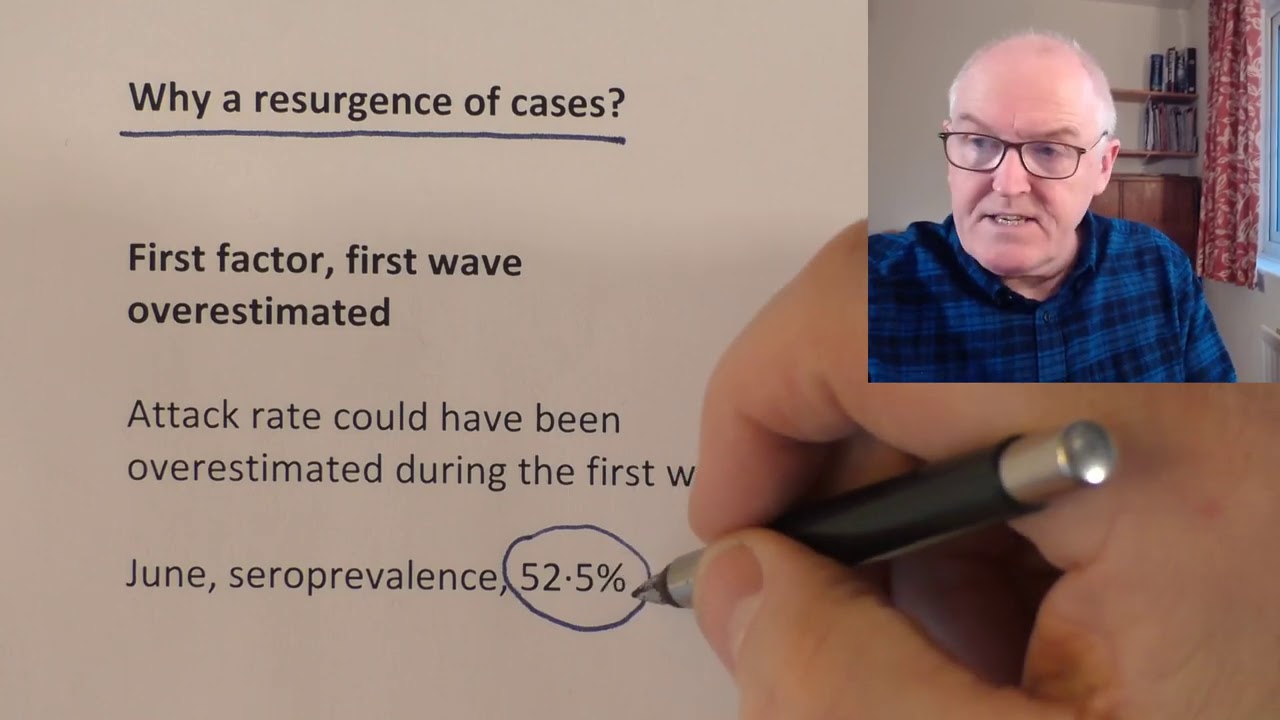Resurgence of COVID-19 in Manaus, Brazil, despite high seroprevalence
Departamento de Molestias Infecciosas e Parasitarias and Instituto de Medicina Tropical da Faculdade de Medicina da Universidade de São Paulo, São Paulo,
Department of Infectious Diseases and Parasitises and Institute of Tropical Medicine of the Faculty of Medicine of the University of São Paulo, São Paulo,
https://www.thelancet.com/journals/lancet/article/PIIS0140-6736(21)00183-5/fulltext
European and Asian countries
Second wave, consistent with many remaining susceptible
Manaus, Brazil
Blood donors, 76% had been infected by October 2020
Also, estimated attack rates in Amazon Basin, 70%
Estimated SARS-CoV-2 attack rate in Manaus, above theoretical herd immunity threshold of 67%
(based on a reproduction number of 3)
But January 2021
Manaus hospital admissions, 3,431
(552 in Dec 1–19, 2020)
May to November, relaxation of control measures, low admissions for 7 months
There are at least four non-mutually exclusive possible explanations for the resurgence of COVID-19 in Manaus.
Why a resurgence of cases?
First factor, first wave overestimated
Attack rate could have been overestimated during the first wave
June, seroprevalence, 52·5%
Second factor, waning immunity
Waning of IgG antibody titres observed in blood donors
Most of the SARS-CoV-2 infections in Manaus occurred 7–8 months before resurgence in January, 2021
(No observed behaviour change in Manaus, reduced population mobility)
If resurgence in Manaus is due to waning, similar resurgence everywhere
Third factor, antigenic escape
New SARS-CoV-2 lineages
Circulating in Brazil, B.1.1.7 and P.1
P.1 detected in Manaus on Jan 12, 2021
P.1 lineage, accrued ten unique spike protein mutations,
Including E484K
P.2 lineage also detected Manaus
P.2 independently accrued the spike E484K mutation
In-vitro evidence that E484K mutation reduces neutralisation by polyclonal antibodies in convalescent sera
Antigenic escape
Fourth factor, increased transmissibility
SARS-CoV-2 lineages circulating in the second wave might have higher inherent transmissibility
Eg. Relative prevalence of P.1 lineage, up to 42% by December, 2020
P.1 lineage
Shares several independently acquired mutations
B.1.1.7 (N501)
B.1.325 (K417N/T, E484K, N501Y)
Conclusions
Variants need to be quickly investigated
Genetic, immunological, clinical, and epidemiological characteristics
Serological and genomic surveillance in Manaus is a priority
Determining vaccine is also crucial
Rapid sharing of lineage-specific frequencies underlying reinfection
Source
